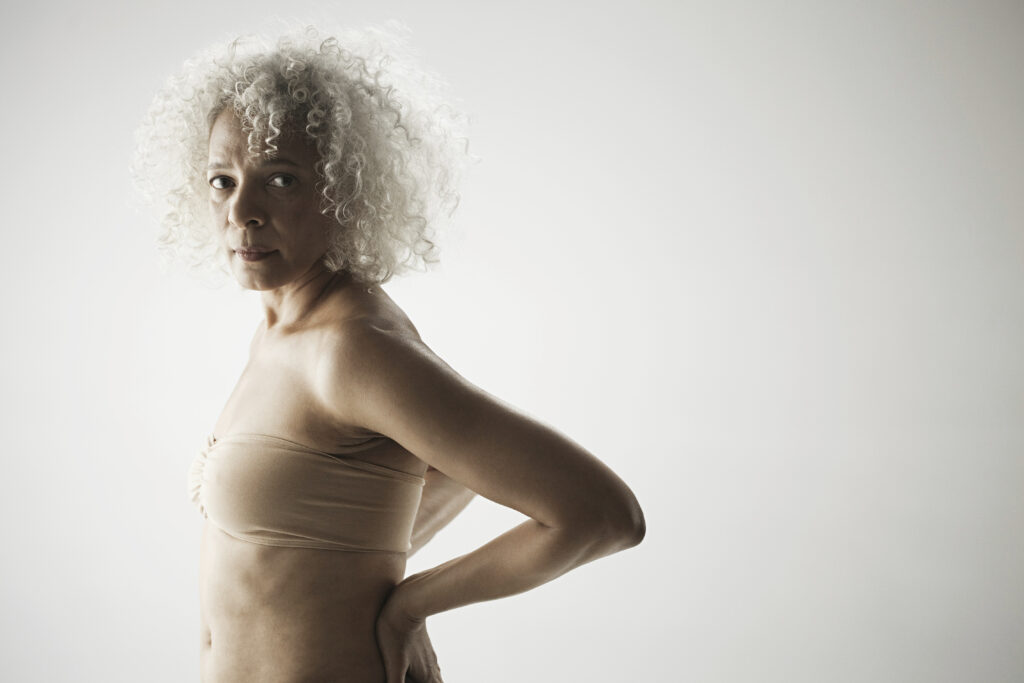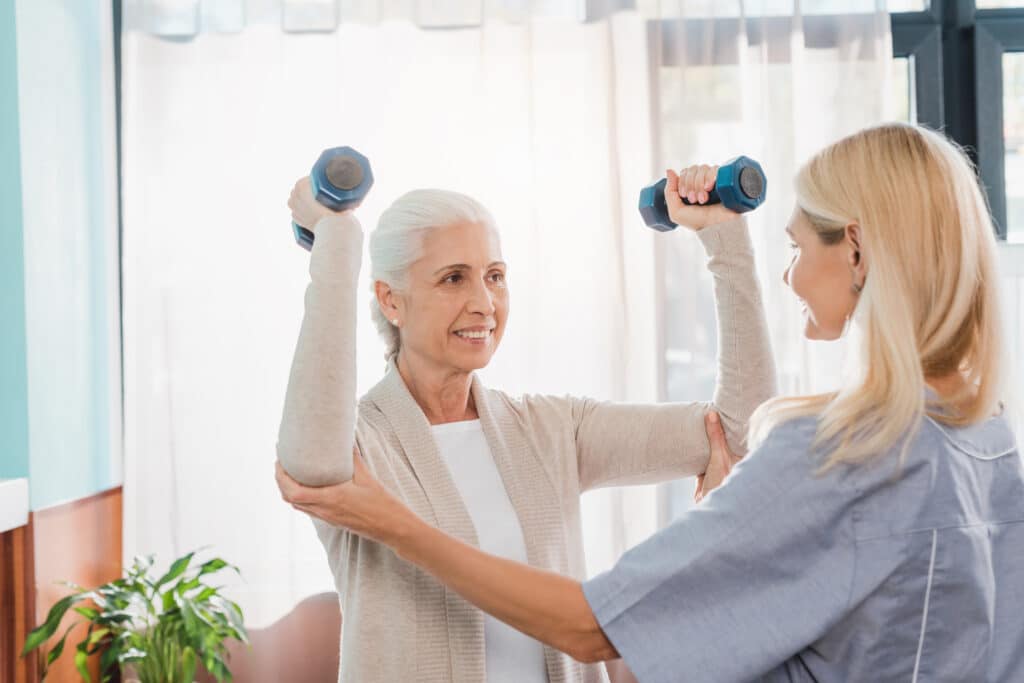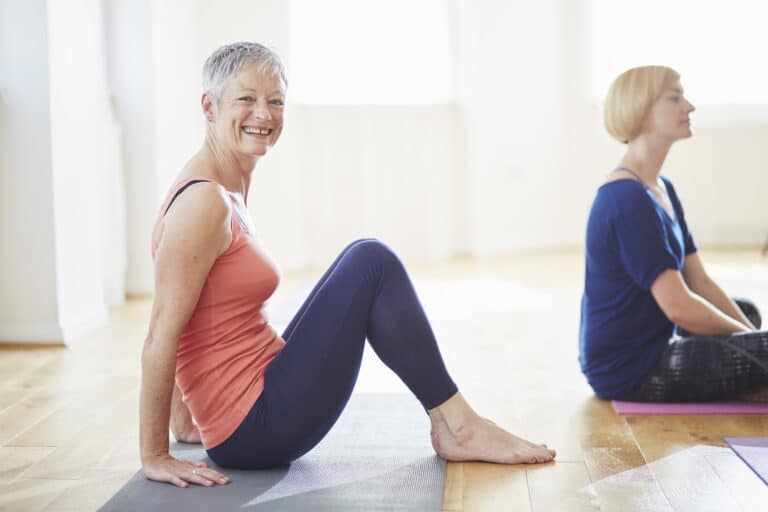Menopause is a natural stage that brings many changes, both seen and unseen. For many women, joint pain is an unexpected symptom that emerges during this transition.
While it’s easy to attribute these aches and discomforts to aging, the real culprit may lie in the hormonal shifts that occur with menopause. As estrogen and progesterone levels decrease, the body’s ability to regulate inflammation and maintain bone density weakens, leading to joint stiffness and discomfort.
In this article, we’ll explore the connection between menopause and joint pain and offer practical strategies for managing and preventing this common issue so you can stay active and comfortable throughout every stage of life.
What is the Connection Between Menopause And Joint Pain?

You might be correct if you think the aches and pains associated with aging are more common in women than men.
Like many other aspects of health, biological differences between the sexes can play a significant role. But you may be surprised about the science behind these changes. Here are some things to remember when exploring joint pain with age.
Hormonal Changes and Inflammation
Did you know that hormones directly impact joint health, especially for women?
Specifically, estrogen and progesterone significantly regulate inflammatory processes and pain sensitivity in the body. During a woman’s reproductive years, these hormones are abundant, ebbing and flowing with her cycle.
Estrogen and progesterone are pivotal hormones in the female reproductive system.
The Role of Estrogen
Estrogen, primarily produced in the ovaries, plays a central role in regulating the menstrual cycle, fostering the development of secondary sexual characteristics, maintaining bone density, and positively impacting cardiovascular health.
The Role of Progestrone
Progesterone, produced after ovulation, collaborates with estrogen to regulate the menstrual cycle, supports the uterine lining for potential pregnancy, contributes to breast development, and may influence mood with its calming effects.
These hormones ensure the proper functioning of the reproductive system. Together, they orchestrate menstrual cycles and influence various physiological processes critical for female health.
However, when a woman reaches menopause, levels of estrogen and progesterone decline dramatically. Based on their job descriptions, you don’t need them for reproductive purposes anymore at the end of your child-bearing years. This hormonal shift can increase inflammation and poor pain regulation, leading to joint pain.1,2
Bone Loss and Osteoarthritis
Estrogen and progesterone also play crucial roles in maintaining bone density and health.
These hormones help prevent bone loss, a critical factor in maintaining joint health. But what happens when these hormone levels drop during menopause?
The answer is that menopause often triggers a loss of bone density, increasing the risk of osteoporosis and osteoarthritis, two conditions known to cause joint pain.
Hormonal changes, particularly a decline in estrogen levels, can impact joint health during menopause. Estrogen, known for its protective effects on bones and joints, helps maintain bone density and supports the production of joint-lubricating fluids.
Reduced estrogen during menopause is associated with an increased risk of osteoarthritis, a degenerative joint condition characterized by the breakdown of cartilage. This can lead to joint pain, stiffness, and reduced mobility.
Additionally, postmenopausal women are more susceptible to osteoporosis, a condition where bones become fragile and prone to fractures due to decreased bone density.
While osteoporosis itself is not a direct cause of joint pain, the consequences of fractures and associated physical activity changes can contribute to joint discomfort.
How to Treat Menopause-Related Joint Pain

Navigating menopause-related joint pain and discomfort requires a thoughtful and comprehensive approach to address both the immediate relief of symptoms and the long-term well-being of joints.
Let’s explore some actionable strategies and effective treatments based on recent medical discoveries.
How to Prevent or Delay Joint Pain Onset Before Menopause
Certain factors can increase the risk of joint pain, such as your genetic make-up, lifestyle habits like smoking, or a history of joint injuries. But there are strategies you can adopt to keep joint pain at bay.
There is not much you can do regarding your genetic make-up. However, being aware of your genetic predispositions for certain conditions is vital to stay on top of your health.
In general, there are a few simple things that every woman can do to stave off pain related to menopause:
Maintaining a healthy weight, for instance, can significantly reduce joint stress. A balanced diet rich in calcium, vitamin D, and anti-inflammatory foods can also help. Regular exercise strengthens muscles and bones and improves joint flexibility and lubrication.
With an older female patient, it always starts with education. I will typically fill my patients in on ways they can actively take care of themselves to prevent menopause-related joint issues.
For instance, beware of excessive alcohol and caffeine consumption, as these can dehydrate your body and escalate inflammation. If you smoke, consider quitting, as it can accelerate bone loss and damage your cartilage.
If you need more support than this basic guidance, consider the following options. Remember to always consult your doctor before making any major health decisions.
Physical Therapy and Exercise

Physical therapy can be a real game-changer for menopause-related joint pain. Your physical therapist brings a wealth of knowledge and experience in treating this condition.
They may recommend exercises and techniques tailored specifically to your needs. This might include strengthening exercises, dynamic flexibility exercises, and heat or cold therapy.
Targeted resistance exercises strengthen the muscles surrounding the bones, providing better support and reducing the risk of pain and fractures. A physical therapist will create a customized program that considers your needs and limitations.
As a PT, there is so much that I can work on with a patient who comes in with menopause-related joint pain to improve their lives. I touch on anything from balance exercises to starting them on a walking program and reviewing daily stretches to keep their joints mobile and strong.
Reach out to your physical therapist to see how they can help you on your journey.
How Can Exercise Help?
Weight-bearing exercises are essential to improve bone health, often compromised by decreased estrogen and progesterone. Older adults often gravitate toward swimming, stationary cycling, and other low-impact activities to “protect” their joints. Though this can be helpful in some respects, weight-bearing activities are integral to building bone strength and density.3
These exercises, which include walking, running, and resistance training, subject bones to mechanical stress, stimulating the production of bone-forming cells. The dynamic impact of weight-bearing activities triggers increased density and strength, ultimately fortifying the skeletal structure and reducing the risk of osteoporosis.
Incorporating regular weight-bearing exercises into one’s routine is a proactive and effective measure to promote robust bone health. Physical therapists guide patients in integrating these activities safely to maximize bone health without compromising safety.
Osteoporosis can also impact posture and increase the risk of vertebral fractures. Physical therapists work on improving posture and educating individuals about proper body mechanics to prevent fractures and reduce strain on the spine.
Hormone Replacement Therapy (HRT)
Hormone Replacement Therapy, or HRT, can be an excellent additional treatment to ease menopause-related symptoms. HRT involves the administration of hormones, typically estrogen and progesterone, to supplement the body’s declining hormone levels.
HRT is especially effective in managing symptoms like hot flashes, night sweats, and vaginal dryness. Any of these are common during menopause due to the decrease in estrogen production.
HRT can be delivered in various forms. This might include pills, patches, creams, or injections, allowing for flexibility in treatment based on individual preferences and medical considerations.2
While HRT provides significant relief for menopausal symptoms, it is not without controversy and considerations. It is crucial to weigh the potential benefits against the individual’s health and risk factors.
Long-term use of HRT has been associated with potential risks, including an increased risk of breast cancer, blood clots, and stroke. The decision to undergo HRT should be made in consultation with a healthcare provider. Regular monitoring and adjustments to the treatment plan are essential. This ensures the safest and most effective use of HRT for managing menopausal symptoms.
Natural Remedies and Lifestyle Changes
Adopting simple holistic practices and lifestyle adjustments empowers individuals to proactively manage menopause-related joint pain and improve their overall quality of life during this transitional phase.
Addressing menopause-related joint pain through natural remedies and lifestyle changes involves a holistic approach aimed at promoting overall well-being. We’ve mentioned some, but they’re worth emphasizing:
Regular exercise, particularly low-impact activities like yoga and walking, can enhance joint flexibility and reduce stiffness. A nutrient-rich diet, including calcium and vitamin D foods, supports bone health and may mitigate joint discomfort.
Maintaining a healthy weight is also crucial, as excess body weight can strain joints. Mind-body practices such as meditation and stress-reduction techniques contribute to overall pain management by addressing the emotional and physical toll of menopause.
Remember, even a small change can make a big difference. However, individuals should consult with healthcare professionals before incorporating new supplements or making significant lifestyle changes.2,4
In my years of experience treating patients, I’ve seen how all of these strategies can significantly improve the quality of life for those suffering from menopause joint pain. It’s always possible to start taking care of your joints. So why not start today?
Key Takeaways
- The decline in estrogen and progesterone during menopause can lead to increased inflammation and sensitivity to pain, contributing to joint discomfort.
- Lower hormone levels during menopause contribute to decreased bone density, increasing the risk of osteoporosis and osteoarthritis, which are closely linked to joint pain.
- Tailored physical therapy exercises and techniques can significantly improve joint flexibility, reduce stiffness, and strengthen muscles around the joints, relieving joint pain.
- Maintaining a balanced diet rich in calcium, vitamin D, and anti-inflammatory foods, regular exercise, and avoiding harmful habits like smoking can help mitigate joint pain.
- Hormone Replacement Therapy (HRT) may offer relief for menopause-related symptoms, including joint pain, but it’s essential to consider the potential risks and benefits before starting treatment.
- Incorporating natural remedies and lifestyle changes, such as yoga and meditation, can support overall joint health and help manage pain effectively.
FAQs
What causes joint pain during menopause?
Joint pain during menopause is largely attributed to hormonal changes, with a significant drop in estrogen and progesterone levels. These hormones are critical in regulating inflammation and pain sensitivity in the body. During menopause, the decreased levels of estrogen and progesterone disrupt normal inflammatory processes, leading to increased joint pain. Additionally, estrogen helps maintain bone density and lubrication in the joints, and its reduction can exacerbate joint discomfort.
Can menopause lead to osteoarthritis and osteoporosis?
Menopause can indeed increase the risk of developing osteoarthritis and osteoporosis, conditions that contribute to joint pain. The decline in estrogen levels associated with menopause results in decreased bone density, making bones more fragile and susceptible to fractures. Osteoporosis refers explicitly to this reduced bone density and increased risk of fractures. Osteoarthritis involves the degeneration of cartilage in the joints, leading to pain and stiffness. Since estrogen plays a role in bone and joint health, its reduction during menopause can accelerate the progression of these conditions.
How can physical therapy help with menopause-related joint pain?
Physical therapy is a valuable approach for managing menopause-related joint pain. It involves personalized exercises that improve joint flexibility, reduce stiffness, and enhance muscle strength around the joints, offering pain relief. Techniques such as strengthening exercises, dynamic flexibility exercises, and modalities like heat or cold therapy can be employed. Physical therapists also focus on weight-bearing exercises to promote bone health, addressing the risk of osteoporosis and osteoarthritis exacerbated by menopause. The goal is to improve overall joint function and reduce pain, tailoring the therapy to individual needs and limitations.
Is Hormone Replacement Therapy (HRT) effective for treating menopause-related symptoms, including joint pain?
Hormone Replacement Therapy (HRT) can be an effective treatment for relieving menopause-related symptoms, joint pain included, by supplementing the body’s declining levels of estrogen and progesterone. This therapy can mitigate the effects of hormonal imbalance, such as hot flashes, night sweats, vaginal dryness, and joint discomfort. However, HRT isn’t suitable for everyone and comes with potential risks, such as an increased risk of breast cancer, blood clots, and stroke. Individuals must discuss HRT’s possible benefits and risks with their healthcare provider to make an informed decision based on their health history and preferences.
Are there any risks associated with HRT for menopause-related joint pain?
While HRT can offer significant relief from menopause-related symptoms, including joint pain, it does carry potential risks that must be considered. The most notable concerns include an increased risk of breast cancer, blood clots, stroke, and in some studies, heart disease. The risk level can vary based on individual health factors, such as age, the timing of HRT initiation, and the specific type of hormone therapy used. Due to these risks, you should have a detailed discussion with their healthcare provider to evaluate HRT’s potential benefits and risks in their specific context. Monitoring and regular check-ups are crucial for those who decide to proceed with HRT.
References
- Lu, C. B., Liu, P. F., Zhou, Y. S., Meng, F. C., Qiao, T. Y., Yang, X. J., Li, X. Y., Xue, Q., Xu, H., Liu, Y., Han, Y., & Zhang, Y. (2020). Musculoskeletal Pain during the Menopausal Transition: A Systematic Review and Meta-Analysis. Neural plasticity, 2020, 8842110. https://doi.org/10.1155/2020/8842110
- Magliano M. (2010). Menopausal arthralgia: Fact or fiction. Maturitas, 67(1), 29–33. https://doi.org/10.1016/j.maturitas.2010.04.009
- Mishra, N., Mishra, V. N., & Devanshi (2011). Exercise beyond menopause: Dos and Don’ts. Journal of mid-life health, 2(2), 51–56. https://doi.org/10.4103/0976-7800.92524
- Sternfeld, B., & Dugan, S. (2011). Physical activity and health during the menopausal transition. Obstetrics and gynecology clinics of North America, 38(3), 537–566. https://doi.org/10.1016/j.ogc.2011.05.008






